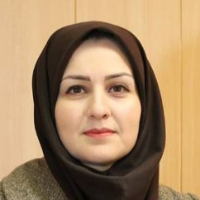Explanation of Matter Importance in Perceptual Hierarchies of Safavid Era Mosques’ Spaces based on the Mulla Sadra’s Views; Case Study: Sheikh Lotfollah Mosque
Meaning perception in the architecture of the Safavid Era requires reviewing the thoughts of Shiite philosophers of that time. Substantial motion theory is one of the most important thinking schools of that era. According to Islamic philosophy, the truth of perception is not limited to material hierarchy, while the matter can provide the field for understanding meanings at different hierarchies by relying on the substantial motion theory. Safavid Mosques represent this thought in architecture. Perception hierarchies in Safavid mosques, including Sheikh Lotfollah Mosque, rely on the substantial motion theory of Mulla Sadra- emphasis on perception movement from the existence of the matter or substance to inexistence- providing the field for journeying the perceptual hierarchies from appearance to the essence. Therefore, this is multidisciplinary, qualitative, and case-study research. In the theoretical foundations part, this study explained three pillars in the perceptual hierarchies of Safavid Mosques by examining the importance of the matter in epistemological topics proposed by Mula Sadra and its relationship with the motion principle. The type of perception in Sheikh Lotfollah was then investigated in each pillar to find the importance of matter and body in the perception of mosques in the Safavid Era regarding the main purpose of this study. According to the principle of journeying from matter to meaning, the main question is about the importance of the matter in each perceptual hierarchy of Safavid Mosques. It is also asked how the substantial motion theory by Mulla Sadra is manifested in perceptual hierarchies of the Safavid Era. In terms of the importance of the matter in the perception, the results indicate that meaning perception in Safavid mosques, particularly Sheikh Lotfollah Mosque includes three pillars (stillness, motion, and unity), which are consistent with perceptual hierarchies of Mulla Sadra. In the stillness pillar, which is the least perceptual hierarchy (because of being mixed with matter), perceptions are confined to sensory issues. In the motion pillar, however, imagination power allows for achieving a spiritual perception of material affairs. Finally, in the unity pillar, light and transparency of space allow the audience to be united with the space's reality. The last pillar includes intellectual perceptions.
- حق عضویت دریافتی صرف حمایت از نشریات عضو و نگهداری، تکمیل و توسعه مگیران میشود.
- پرداخت حق اشتراک و دانلود مقالات اجازه بازنشر آن در سایر رسانههای چاپی و دیجیتال را به کاربر نمیدهد.





